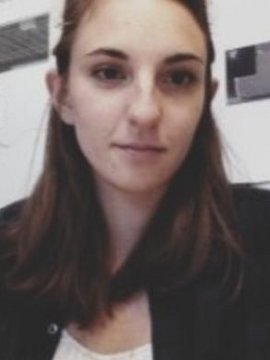Dr. Thais Couasnon

Funktion und Aufgaben:
Postdoctoral fellow in the group Interface Geochemistry (section 3.5)Wissenschaftliche Interessen:
Thaïs Couasnon did her PhD at the Institut de Physique du Globe de Paris, on the biomineralization of manganese on the surface of bacterial biofilms. During her PhD, she collaborated with the Laboratoire Matériaux et Phénomènes Quantiques (MPQ) of the Université Paris Cité to image the biomineralization process in a liquid at the submicrometer scale and at high temporal resolution using liquid phase transmission electron microscopy. She is currently a postdoctoral fellow at the German Research Center for Geosciences (GFZ) to develop this relatively new technique to study the formation and transformation of minerals in situ, in order to better understand the mechanisms governing the mobility and bioavailability of elements in natural and industrial settings.Karriere:
November 2019 - present: Postdoctoral researcher in Interface Geochemistry (section 3.5)
volunteering: EAG communication committeeWerdegang / Ausbildung:
- 2015 - 2019 - Ph.D. Earth and Environmental Science: "Role of reactive oxygen species and substances exopolymeric bacteria in the process of biomineralization of manganese"
Institut de Physique du Globe de Paris (IPGP), Paris, France
Advisors: Alexandre Gélabert and Bénédicte Ménez - 2013 - 2015 - M.S. Chemistry
Ecole Normale Supérieure Ulm, Paris, France
- 2009 - 2012 - B.S. Chemistry and Biology,
Université Joseph Fourier, Grenoble, France
Projekte:
NEWS:
July 2023: Our latest paper on Liquid-Phase TEM was released in Advanced Sciences. As part of our understanding of the influence of the incident electron beam irradiation on water chemistry, the paper provide experimental proofs of the anticipated radiolytic chemistry during a liquid-phase TEM experiment.Liquid phase transmission electron microscopy (LP-TEM) allows in situ observations of the dynamic behavior of materials in liquids with both high spatial and temporal resolution. One of the main drawbacks of this technique comes from the interaction of the incident electrons with the water molecules constituting the solvent of the liquid cell. This result in a significant change in chemistry of the aqueous solution, inevitably impacting the actual phenomena observed.
more info: https://lnkd.in/esXxye4i

